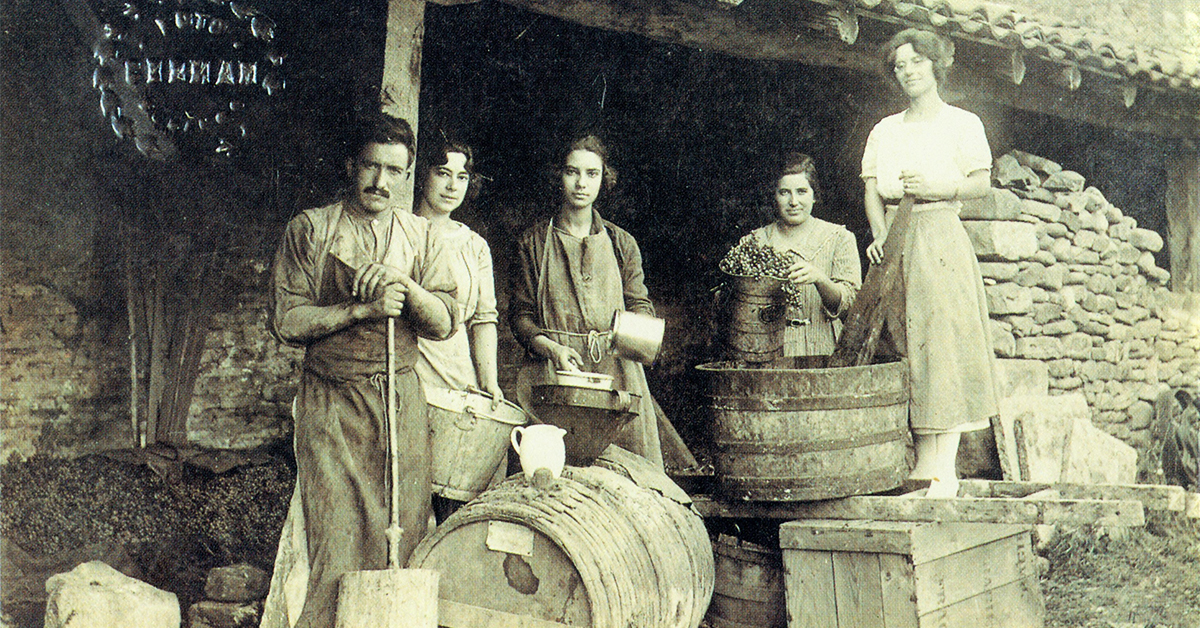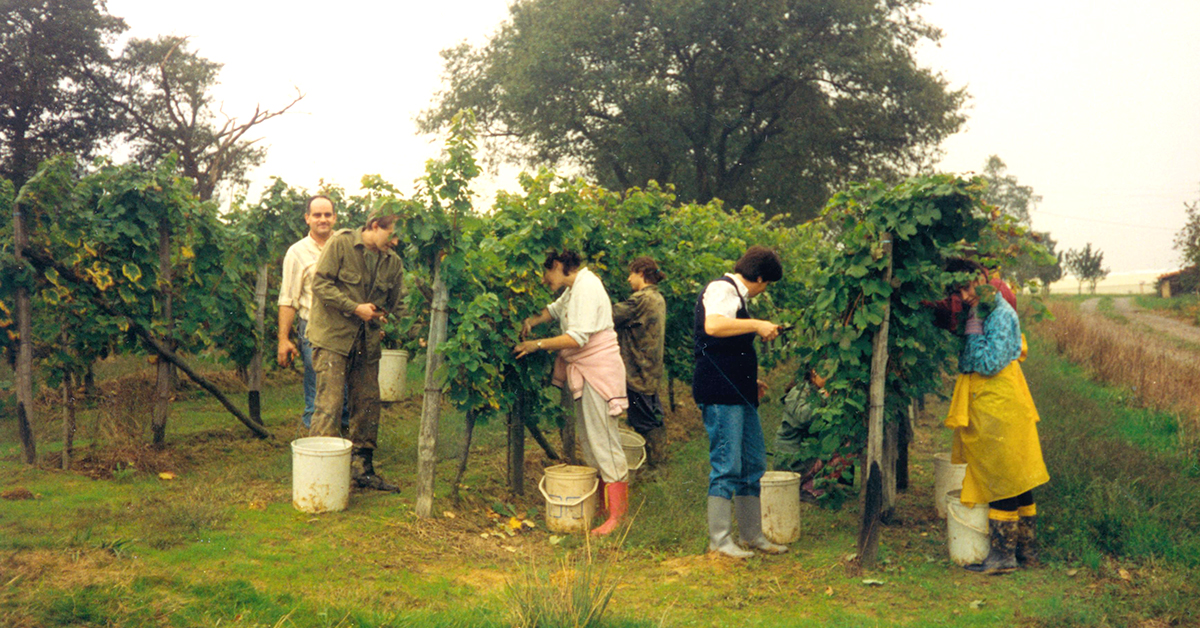Basque ethnography at a glance
It is grape harvest time in the Basque Country. Txakolin wine producers sample their grapes to check acidity levels, sugar content, and three or four other parameters, in search of optimal fruit maturity.
Home winemaking was once customary in our country. Most farmhouses would keep some vines, on orchard and field margins, typically, or in rows between cultivated fields, to make the so-called txakolina — a slightly sparkling, dry white wine— for their own consumption. A quarter of a century ago there would be just over a dozen hectares of vineyards in Bizkaia; today there are more than four hundred.
Larger areas of vineyards have, however, been likewise documented. The German philosopher Wilhelm von Humboldt was indeed fascinated, in the early 19th century, on his way to Getaria (Gipuzkoa) by the beautiful vineries which covered the hills of the coastline, and observed that huge bones of whale, planted in the ground, served as a support for grapevines in some yards.
Folle Blanche, best known in Bizkaia as muna-mahatsa, precisely for having been confined to the edges of arable fields, was formerly the most common variety in these latitudes. But because of the climatology of the Basque coast, the alcoholic graduation of grapes at harvest did not usually exceed 8-9º, at best. According to the regulatory council guidelines of each denomination —Álava, Gipuzkoa and Bizkaia Txakolina— Hondarrabi Zuri whites are, with an average graduation of about 12º, the present txakolin grapes par excellence, an exclusive and distinctive combination of other authorized varieties (Petit Courbu, Folle Blanche, Petit Manseng, Riesling…) adding character to the final product.
Great perseverance is required in the vineyard. Vines need to be pruned and tied, the soil needs to be fertilized, young plant shoots need to be removed, later come the trellising, thinning and green harvesting… And as if that were not enough, our country’s climatology demands more than lime and sulphur to protect the vines from possible epidemics (mildew, powdery mildew and botrytis, among others).

Outskirts of Bilbao, beginning of the 20th century. Bizkaia Postatxartelan [Postcard images of Bizkaia]. Santurtzi ed., 1991. Euskal Biblioteka. Labayru Fundazioa.
Once collected, clusters are weighed and then destemmed. The grain would be crushed with the feet back in the day; pneumatic presses are used now to extract the juice from the grapes. Extraction is conducted under inert gas, usually nitrogen, to prevent must oxidation. Clarification and racking processes follow, allowing the must to settle before impurities are discarded. After four to five days, a selection of yeasts is added, whose action leads to the transformation of the sugars into alcohol.
The fermentation process lasts about eight days, ten at most. During that time, the density of the wine is measured, it is smelled and tasted, barrels are refilled if necessary… And approximately three months later, depending on how it behaves, the finished txakolin is bottled, ready to be marketed.
The quality of txakolin wines has significantly improved. Home-made white wine used to be much more acidic. Failing to be filtered and racked, solid waste was retained, causing it to oxidize. As we are told, straight from a newly-opened barrique, the young wine was truly delicious, but day by day it would acidify. Nowadays, wineries use more advanced technologies and means to produce a quality product which can compete with other wines on the market.
Jaione Bilbao – Ethnography Department – Labayru Fundazioa
References for further information: Family Diet and Agriculture, both part of the Ethnographic Atlas of the Basque Country collection; and Wilhelm von Humboldt’s “Diario del viaje vasco. Mayo de 1801 [Diary of a journey to the Basque Country. May 1801]”, translated by Telesforo de Aranzadi and published in the International Journal on Basque Studies, v. 13, n. 4, 1922; see also Txakolinaren gozoan [Sipping on delicious txakolin wine], a report by Lezama Council.



